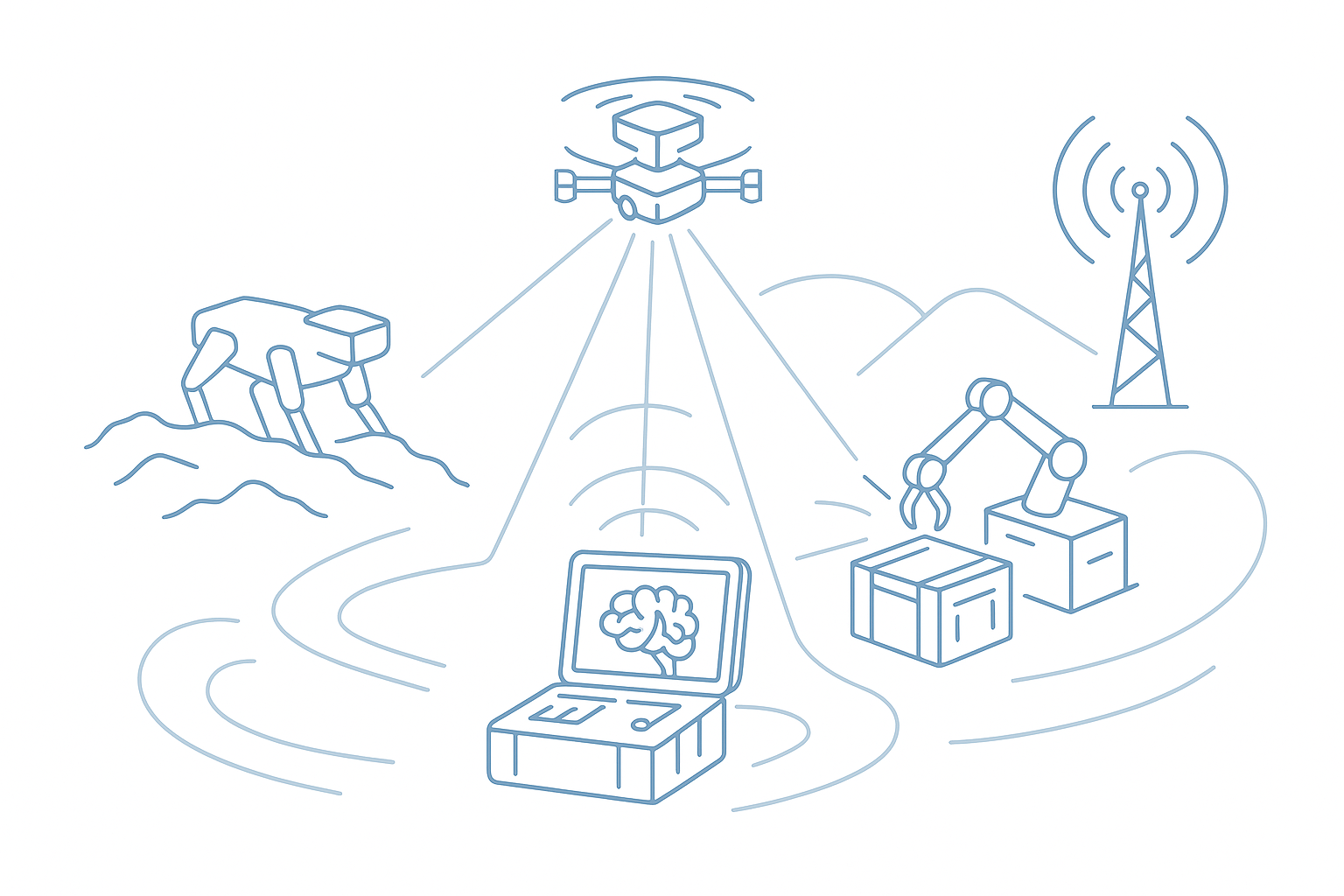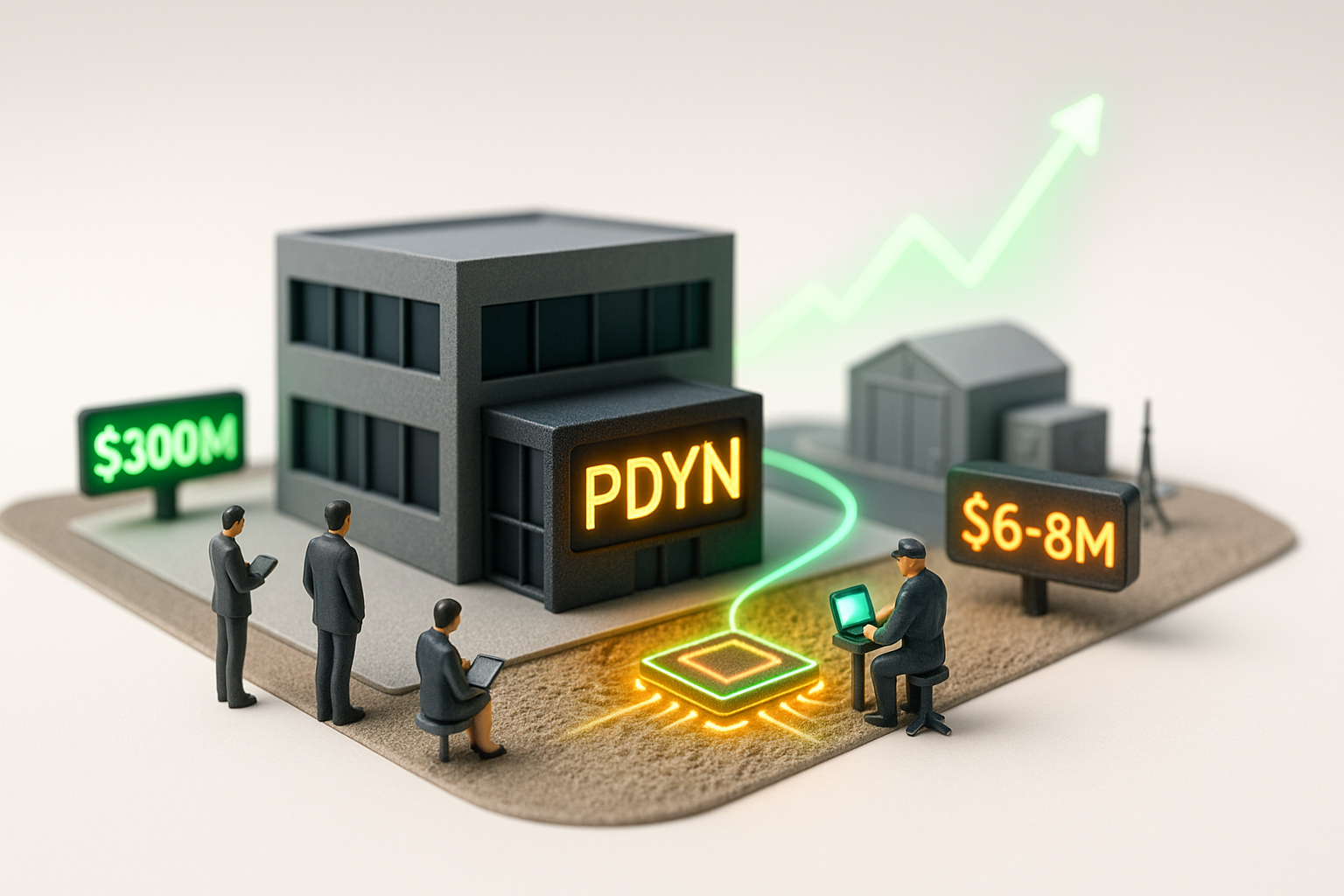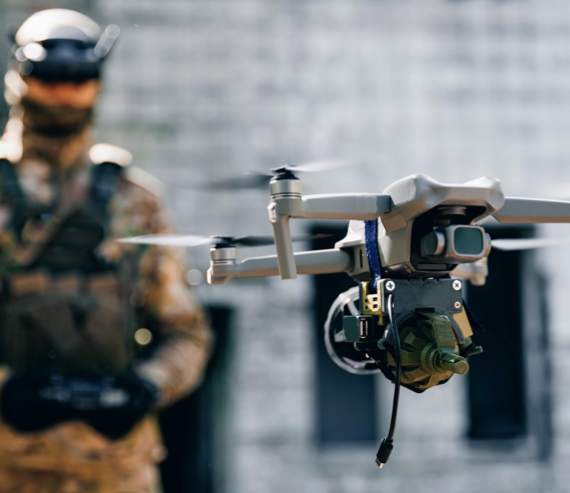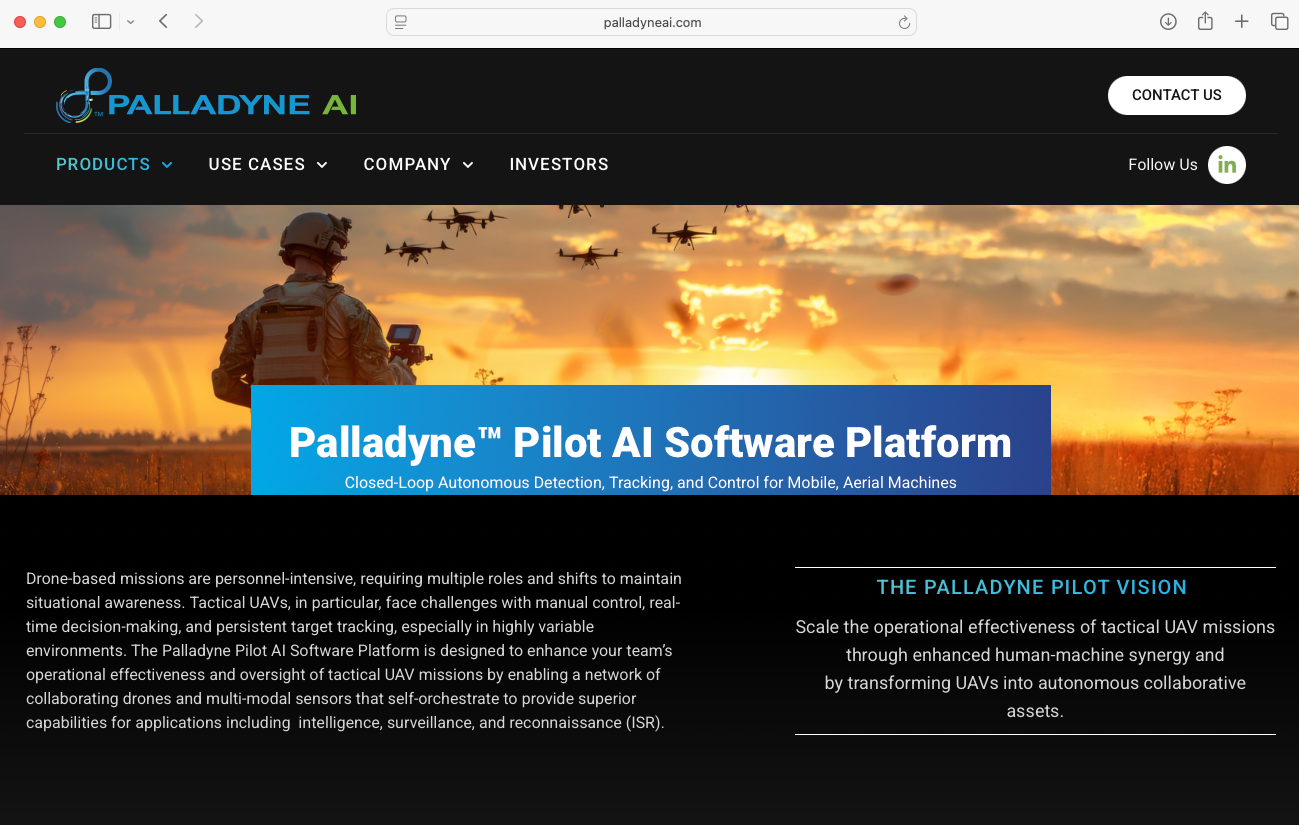Autonomy in the Field: Why Palladyne AI Could Be a Strategic Sleeper

Want to invest in PDYN?
Visit our How to Invest page to get started with platforms like Fidelity or Robinhood.
In a tech cycle dominated by generative apps and digital interfaces, one company is taking a different path—building intelligence that operates outside the screen. Palladyne AI isn’t chasing consumer-facing hype. It’s focused on real-world autonomy: systems that help machines make decisions, coordinate activity, and function independently in high-stakes environments.
This is a small company with a long history and a sharp new focus. And it might be one of the few publicly traded ways to invest in the future of intelligent robotics and defense-grade autonomy.
From Sarcos to Palladyne: A Strategic Pivot
Palladyne AI didn’t appear out of nowhere. It’s the continuation of a company called Sarcos Robotics, which spent more than three decades developing advanced robotics systems for government, military, and industrial customers. Sarcos was known for its work in exoskeletons, mobility platforms, and inspection robots, but by 2023, it had reached an inflection point.
In early 2024, the company rebranded as Palladyne AI and pivoted fully into artificial intelligence. The shift wasn’t just cosmetic. The leadership team was restructured, the hardware focus was reduced, and the new mission was clear: to build software that enables real autonomy in the field.

That rebrand wasn’t a reset. It was a refocus—one that put decades of robotics knowledge behind a more scalable, software-first platform.
What They’re Building
At the heart of Palladyne’s new direction is its software platform, Palladyne IQ.
Palladyne IQ is designed to serve as the intelligence layer for autonomous machines. It powers applications like inspection, targeting, multi-agent coordination, and real-time decision-making across environments that are too complex for simple rule-based automation.
The technology isn’t designed for simulations or lab demos. It’s meant to work in the real world—in places like defense installations, logistics hubs, aircraft maintenance zones, and industrial facilities. It supports autonomous ground robots, drones, and mobile platforms, and it’s built to operate in environments where communications are intermittent and decisions need to be made quickly.
Rather than trying to bolt AI onto hardware, Palladyne is embedding intelligence at the core.
Signs of Traction
Although it still operates under the radar for most investors, Palladyne has begun to show real signs of momentum.
In early 2025, the company was named a finalist in the NCMS TechConnect Defense Innovation competition. That recognition is an important signal of relevance in the defense technology ecosystem, where validation often happens through contracts, not press releases.

Soon after, Palladyne signed a multi-year agreement with the Warner Robins Air Logistics Complex, a key U.S. Air Force hub. That contract moves the company from potential to production, putting its software into environments where autonomy matters.
Then, in June 2025, Palladyne was added to the Russell 3000 and Russell 2000 indexes. For a company of its size, that’s a meaningful milestone. It opens the door to institutional visibility, automated inclusion in fund models, and a new level of screening among investors who had never heard of Sarcos, let alone Palladyne.
These aren’t marketing wins. They’re operational ones. And they point toward a company quietly executing.
The Numbers
From a financial standpoint, Palladyne is still early in its transformation.
The company trades under the ticker PDYN on the Nasdaq, with a market capitalization just under $300 million. Annual revenue is currently in the six-to-eight-million-dollar range, which puts it in microcap territory. Liquidity is modest, and coverage among analysts remains thin.
But with index inclusion now complete, and with strategic contracts starting to materialize, that visibility gap may start to close.
Why It Matters
What makes Palladyne interesting isn’t just its product or financials. It’s the space it occupies.
As artificial intelligence shifts from digital applications to physical systems, companies like Palladyne are becoming critical. The future of autonomy won’t be built entirely in code. It will live in the field—in the drones that fly reconnaissance missions, in the robots that inspect and repair, in the machines that operate in environments too dangerous or too complex for humans.
Few companies are addressing that reality with focus and credibility. And even fewer of those companies are publicly traded.
Palladyne operates in the same strategic arena as Anduril, Shield AI, and other defense-focused autonomy players. But unlike those firms, it offers public market investors a chance to gain exposure today.
Risks and Realities
Palladyne is not without risk. The company remains small and early-stage. Its contract pipeline, while promising, is not yet fully developed. The defense sector moves slowly, and the challenges of integrating AI into legacy systems are real.
There is also the question of scalability. While Palladyne IQ has clear use cases, broad adoption will require ongoing proof of value, performance in the field, and the ability to win additional contracts in a highly competitive space.
But these risks are what create the opportunity. The upside isn’t priced in. And the story is still unfolding.

Investor Takeaway
Palladyne AI is a microcap company with a macro-level focus. It’s building software infrastructure for autonomous machines that need to operate in the real world, not just on a screen. It has the legacy of Sarcos behind it, early signs of traction in the defense sector, and a platform that fits squarely into the next wave of AI adoption.
It may not be a household name. But for investors tracking how intelligence is being embedded into hardware, vehicles, and mission-critical systems, it’s worth watching.
Where to Start Your Research
If Palladyne is on your radar, the best place to start is their company website at palladyneai.com. For deeper insights, check their filings and investor materials at investor.palladyneai.com, or search PDYN on Nasdaq and MarketBeat. You’ll find a rebrand in motion, a defense tech contract portfolio taking shape, and a software roadmap designed for the edge.
This one may take time. But it’s not noise. It’s signal. And signal, in the right place, often arrives before the crowd.

Want to invest in PDYN?
Visit our How to Invest page to get started with platforms like Fidelity or Robinhood.
Disclosure: This article is editorial and not sponsored by any companies mentioned. The views expressed in this article are those of the author and do not necessarily reflect the official policy or position of NeuralCapital.ai.